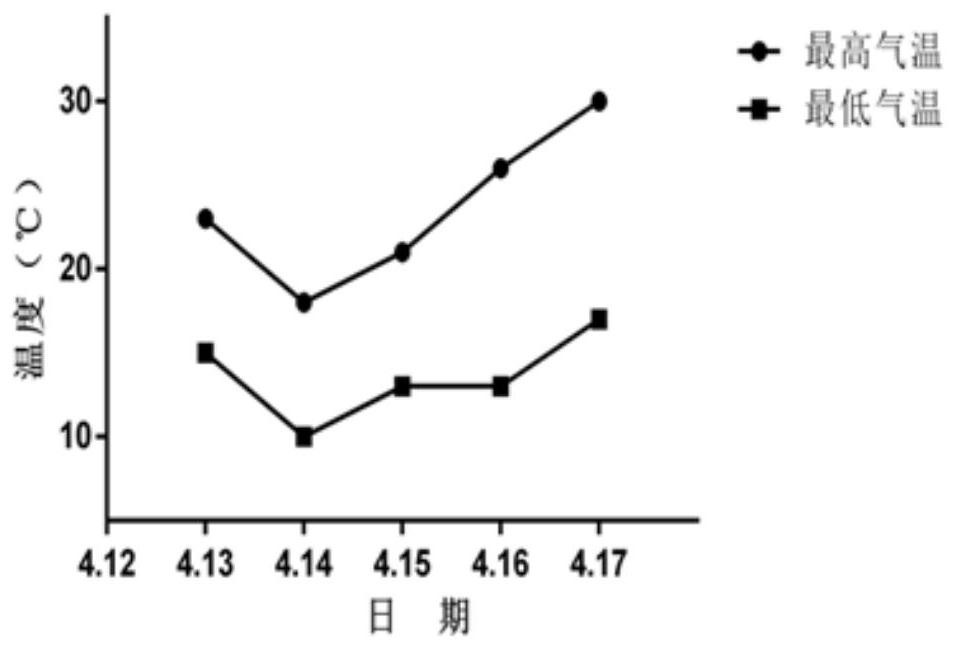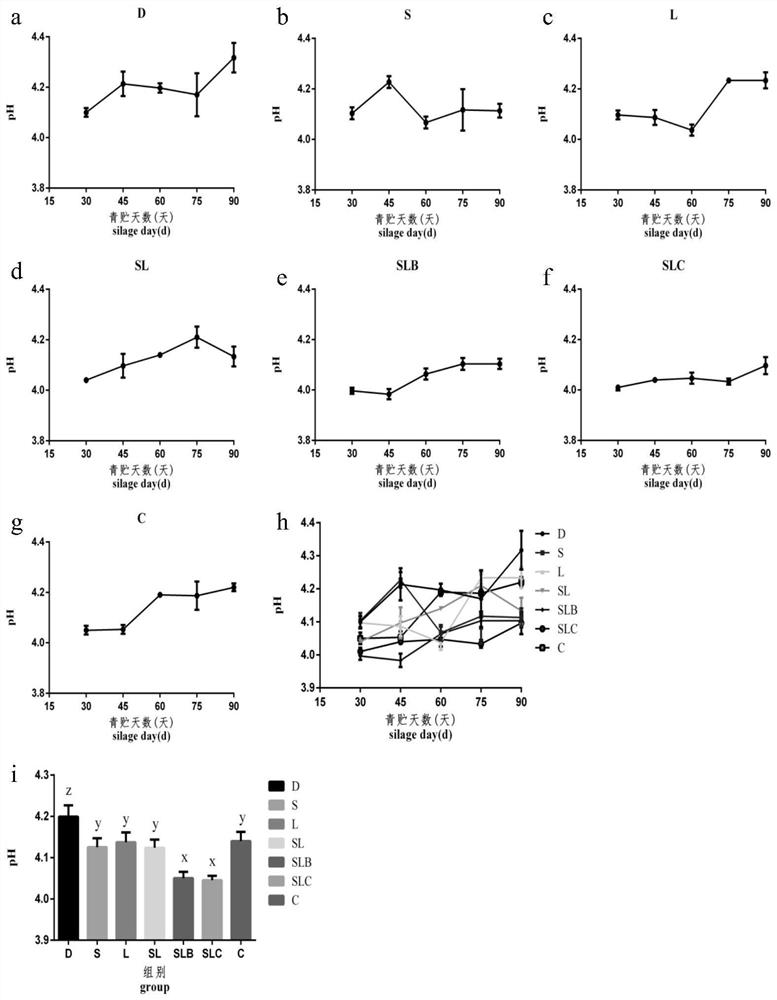Silage rape feed as well as preparation method and application thereof
A rapeseed and feed technology, applied in the field of silage, can solve the problems of not involving the storage of whole plant rapeseed silage, the inability to achieve a balanced supply, and the unknown effect of use, so as to increase palatability, reduce nutrient loss, and improve quality. Effect
- Summary
- Abstract
- Description
- Claims
- Application Information
AI Technical Summary
Problems solved by technology
Method used
Image
Examples
Embodiment 1
[0035] The experimental material is Huayouza No. 62 rapeseed, which was cut at the late flowering stage. The silage method is silage bag (70cm*130cm) silage.
[0036] Using a completely random design, two kinds of silage bacteria were added: solid bacteria S: Lactobacillus plantarum (CGMCC 1.557), Lactobacillus acidophilus (CGMCC1.12735), Lactobacillus Brucella (CGMCC1.3108), Lactobacillus casei (CGMCC 1.3206), the effective live bacteria of each bacteria is 1×10 10 CFU / gram, the enzyme activity of cellulase is 50,000 U / g; liquid bacterial agent L: Lactobacillus plantarum (CGMCC1.557), Lactobacillus acidophilus (CGMCC1.12735), Pediococcus pentosacea (CGMCC1.12961) , the effective viable bacteria of each strain is 1.5~2×10 9 CFU / mL; A total of 7 silage schemes were designed, including: (1) untreated rapeseed (control D); (2) adding bacterial agent S; (3) adding bacterial agent L; (4) adding bacterial agents S and L (SL); (5) Add bacterial agents S, L and brown sugar (SLB); (...
Embodiment 2
[0072] According to Example 1, each group was silaged for 60 days, and the ruminal degradation rate of each group of rapeseed feed treatment group is shown in Table 5. The specific operation is to select the dried and pulverized samples for 60 days, sieve through a 40-mesh grading sieve, weigh 3.0 g respectively and put them into nylon bags (10cm*5cm) made of 240-mesh nylon cloth, repeat 2 times per cow, put Put them into the rumen of fistula Holstein steers (3 heads) and digest them for 12h, 24h and 72h respectively, take them out, rinse slowly with water until clear, dry at 65°C to constant weight, and measure the contents of DM, CP, NDF and ADF respectively. As can be seen from the results, with the increase of digestion time, the degradation rates of DM, CP, NDF and ADF all increased significantly (p<0.05); silage DM, CP, NDF and ADF degradation rates were significantly different (p<0.05) in different processing modes of rapeseed in silage (p<0.05). 0.05). The DM degradat...
Embodiment 3
[0074] A method for preparing silage rape feed, comprising the following steps:
[0075] S1, mechanical mowing: mechanical harvesting of the whole plant of rapeseed, to obtain fresh samples of rapeseed;
[0076] S2. Drying: Cut it down and dry it on the spot, monitor the change of moisture content every day, and when it drops to 70% or below, it will be bundled and transported, and shredded by a mower;
[0077] S3. Adding additives: activate the solid bacterial agent S first, add 200 grams of brown sugar and 2L of water for every 25 grams of solid bacterial agent S to activate, adjust the water temperature between 30-37°C, stir evenly; spray evenly on the chopped rapeseed for activation The final solid bacterial agent S, liquid bacterial agent L and corn flour, wherein, the solid bacterial agent S includes: 4 parts of Lactobacillus plantarum, 3 parts of Lactobacillus acidophilus, 3 parts of Lactobacillus Brucella, 5 parts of Lactobacillus casei, fiber 1 part of prime enzyme; ...
PUM
 Login to View More
Login to View More Abstract
Description
Claims
Application Information
 Login to View More
Login to View More - R&D
- Intellectual Property
- Life Sciences
- Materials
- Tech Scout
- Unparalleled Data Quality
- Higher Quality Content
- 60% Fewer Hallucinations
Browse by: Latest US Patents, China's latest patents, Technical Efficacy Thesaurus, Application Domain, Technology Topic, Popular Technical Reports.
© 2025 PatSnap. All rights reserved.Legal|Privacy policy|Modern Slavery Act Transparency Statement|Sitemap|About US| Contact US: help@patsnap.com



